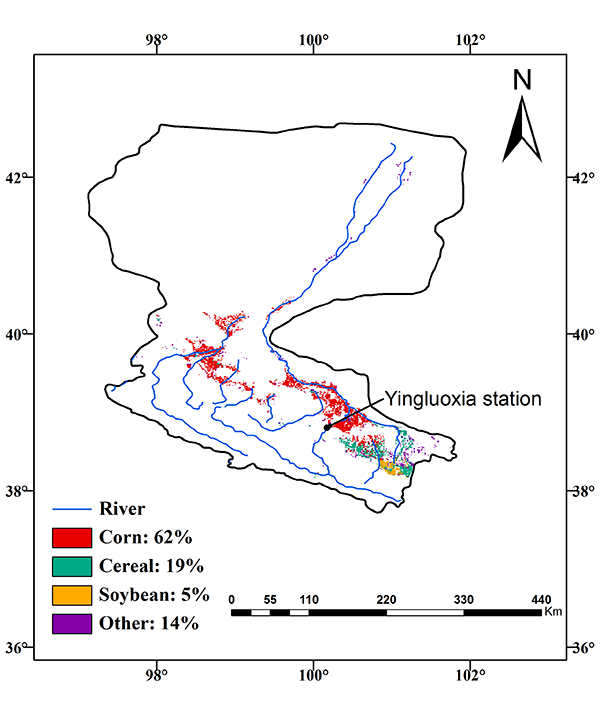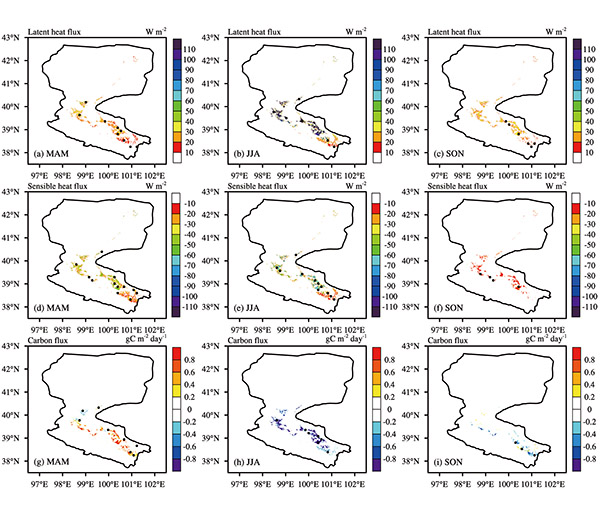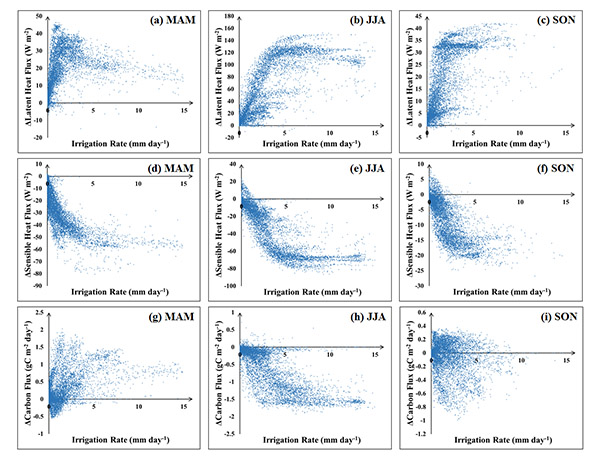State Key Laboratory of Numerical Modeling for Atmospheric Sciences and
Geophysical Fluid Dynamics (LASG)
Institute of Atmospheric Physics, Chinese Academy of Sciences

Vol. 3/No.3 August 2017
Seasonal effects of irrigation on land-atmosphere latent heat, sensible heat and carbon fluxes in semi-arid basin
Anthropogenic irrigationchanges soil moisture and land-atmosphere water, energy and carbon fluxes, and essentially affects the ecohydrologicalprocesses and the climate system. Quantifying the land-atmosphere fluxes’ responses to anthropogenic irrigation not only advances our understanding on the hydrological cycle with human intervention, but also benefits effective human irrigation for sustainable water use.
Recently, scientists from CAS Institute of Atmospheric Physics, Prof. XIE Zhenghui and Dr. ZENG Yujin incorporated a scheme of anthropogenic irrigationinto the Community Land Model version 4.5, and conducted a series of simulations over Heihe River Basin (Fig. 1), the second largest inland basin in northwestern China to investigate the seasonal impacts of irrigation on the land-atmosphere latent heat (LH), sensible heat (SH) and carbon fluxes.
Their results show that the effects of irrigation on LH and SH are strongest during summer with a LH increase of ~100 W m–2 and a SH decrease of ~60 W m–2 over intensely irrigated areas (Fig. 2). However, the reactions are much weaker during spring and autumn when there is much less irrigation. When the irrigation rate is below 5 mm day–1, the LH generally increases, whereas the SH decreases with growing irrigation rates. However, when the irrigation threshold is in excess of 5 mm day–1, there is no accrued effect of irrigation on the LH and SH (Fig. 3). Irrigation produces opposite effects to the NEE during spring and summer. During the spring, irrigation yields more discharged carbon from the land to the atmosphere, increasing the NEE value by 0.4–0.8 gC m–2 day–1, while the summer irrigation favors crop fixing of carbon from atmospheric CO2,, decreasing the NEE value by ~0.8 gC m–2 day–1.

Figure 1. Study area and location of the Heihe River Basin in northwestern China, the spatial pattern of crops in the basin
Figure 2. Climatic spatial pattern of (a-c) latent heat flux, (d-f) sensible heat flux and (g-i) carbon flux differences between IRR (the simulation with irrigation) and CTL (the simulation without irrigation) in (a, d, g) spring, (b, e, h) summer and ,(c, f, i) autumn, averaged from 1981 to 2013. The dots represent the area that passed the Student’s t-test at a 95% confidence level

Figure 3. Differences of (a-c) latent heat flux, (d-f) sensible heat flux and (g-i) carbon flux between IRR and CTL models versus the irrigation rate in (a, d, g) spring, (b, e, h) summer and, (c, f, i) autumn
This research finding has been published in Earth System Dynamics.
Reference:
Zeng, Y., Xie, Z., and Liu, S. (2017). Seasonal effects of irrigation on land–atmosphere latent heat, sensible heat and carbon fluxes in semi-arid basin, Earth System Dynamics, 8, 113-127, doi:10.5194/esd-2016-45.
http://www.earth-syst-dynam.net/8/113/2017/
Contact: XIE Zhenghui, zxie@lasg.iap.ac.cn
E-mail: lasg_newsletter@lasg.iap.ac.cn
Editors: Chuanyi Wang (wangcy@lasg.iap.ac.cn), Kangjun Chen(ckj@lasg.iap.ac.cn)